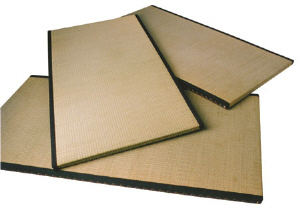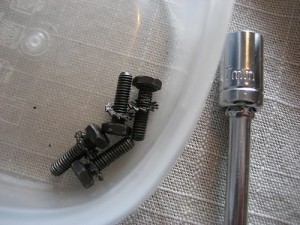Tatami Sizes
Tatami is a kind of mat that is a traditional form of flooring in Japan.  Their core is typically made from rice straw and covered with woven soft rush straw. At present, the core of tatami is sometimes made from styrofoam or boards of compressed woodchip. The sizes of tatami are usually similar and their long sides have some edging of plain cloth or brocade though there are some tatami that don’t have any edging at all.
Their core is typically made from rice straw and covered with woven soft rush straw. At present, the core of tatami is sometimes made from styrofoam or boards of compressed woodchip. The sizes of tatami are usually similar and their long sides have some edging of plain cloth or brocade though there are some tatami that don’t have any edging at all.
Sizes of Tatami
In various regions of Japan, the sizes of tatami slightly differ from each other. The measurement of tatami in the Kyoto region is 0.955 meters by 1.91 meters and is called as Kyoma tatami. The measurement of tatami in the region of Nagoya is 0.91 meters by 1.82 meters and is called as Ainoma tatami. The measurement of tatami within the Tokyo region is 0.88 meters by 1.76 meters and is called as Kantoma or Edoma tatami.
The sizes of tatami with regards to average thickness are 5.5 centimeters for the Kyoma tatami and 6.0 centimeters for the Kantoma tatami. A half mat of tatami is known locally as hanjo and a three-fourths mat of tatami is locally known as daimedatami. Daimedatami is the kind of mat in Japan that is laid out in tea ceremony rooms.
Room sizes in Japan are usually measured using the number of tatami laid out on the floor. Within the Nagoya region, the sizes of tatami are basing on the English system of measurement. Therefore, the size of tatami of 0.91 meters by 1.82 meters in metric system is similar to three feet by six feet in English system. The typical room sizes found in Japan are nine feet by nine feet or four and a half tatami, nine feet by twelve feet or six tatami, and twelve feet by twelve feet or eight tatami. Tearooms are traditionally intended to be four and a half tatami and shops are five and a half tatami in size.
Floor Layout of Tatami
There are two rules in Japan with regard to arranging tatami on the floor – auspicious and inauspicious. Auspicious layout of tatami is done by arranging the tatami where their junctions will make a ‘T’ shape. Inauspicious layout of tatami is done by arranging the tatami in a grid style where their junctions will make a ‘+’ shape. The most commonly used layout in Japan is the auspicious layout wherein it is believed to bring good luck to the household. The arrangement of tatami is usually based on the type of occasion being celebrated.





